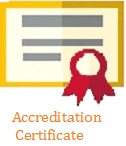Perubahan Populasi Mikroroganisme Pelarut Fosfat pada Lahan Sawah dengan Sistem Pertanian Intensif menjadi Sistem Pertanian Organik Berkelanjutan
Abstract
Keywords
Full Text:
PDFReferences
De Souza, M-J. B. D., S. Nair and D. Chandramohan. 2000. Phosphate solubilizing bacteria around Indian peninsula. Indian J. Mar. Sci. 29: 48-51.
El-Azouni, I.M. 2008. Effect of phosphate solubilizing fungi on growth and nutrient uptake of soybean (Glycine max L.) plants. J. Appl. Sci. Res. 4(6): 592-598.
Hanafiah, K. A. 2005. Dasar-dasar Ilmu Tanah. PT Raja Grafindo Persada. Jakarta. 360 hlm.
Harjadi, S. S. 1996. Pengantar Agronomi. PT Gramedia. Jakarta. 185
Ivanova, R., D. Bojinova, and K. Nedialkova. 2006. Rock phosphate solubilization by soil bacteria. J. Univ. Chem. Tech. Metall. 41(3): 297-302.
Jacob, A. 2001. Metode dan Teknik Pengambilan Contoh Tanah dan Tanaman dalam Mengevaluasi Status Kesuburan Tanah. Diakses dari http://fapet.ipb.ac.id. 4 Desember 2006.
Kucey, R. M. N. 1983. Phosphate solubilizing bacteria and fungi in various cultivated and virgin Alberta soils. Can. J. Soil Sci. 63: 671-678.
Niswati, A., S. Yusnaini, dan M.A.S. Arif. 2008. Populasi mikroorganisme pelarut fosfat dan p-tersedia pada rizosfir beberapa umur dan jarak dari pusat perakaran tanaman jagung (Zea mays L.). J. Tanah Trop. 13(2): 123-130.
Padmini, O.S. dan T. Wirawati. 2000. Pengaruh dosis pupuk fosfat dan mikroorganisme efektif (EM-4) terhadap pertumbuhan dan hasil cabai. Agrivet. 4(1): 79-84.
Plante, A.F. 2007. Soil biogeochemical cycling of inorganic nutrients and metals. In: Soil Microbiology, Ecology, and Biochemistry, 3rd, E.A. Paul (Ed.). Academic Press. Amsterdam, pp. 389-432.
Poonguzhali, Selvaraj, M. Madhaiyan, and T. Sa. 2008. isolation and identification of phosphate solubilizing bacteria from Chinese Cabbage and their effect on growth and phosphorus utilization of plants. J. Microbiol. Biotechnol. 18(4): 773–777.
Rao, N. S. 1986. Mikroorganisme Tanah dan Pertumbuhan Tanaman. Penerbit UI Jakarta. 353 hlm.
Stockdale, E.A., Shepherd, M.A., Fortune, S., Cuttle, S.P., 2002. Soil fertility in organic farming systems-fundamentally different? Soil Use and Management 18: 301-308.
Supriyadi dan Sudadi. 2001. Efektifitas bakteri pelarut fosfat pada beberapa macam bahan pembawa inokulum. Sains Tanah 1(1): 30-36.
Widawati, S. 1999. Pengaruh introduksi mikroba tanah terhadap pertumbuhan dan produksi kedelai (Glycine max L.) di tanah masam. J. Mikrobiol. Trop. II(2): 61-67.
Yafizham. 2003. Aplikasi mikroba pelarut fosfat dan pupuk P terhadap produksi kacang tanah pada tanah podsolik merah kuning. J. Agrotrop. VIII(1): 18-22.
DOI: http://dx.doi.org/10.5400/jts.2009.v14i2.143-148
Refbacks
- There are currently no refbacks.
INDEXING SITE
This work is licensed under a Creative Commons Attribution 4.0 International License.

















